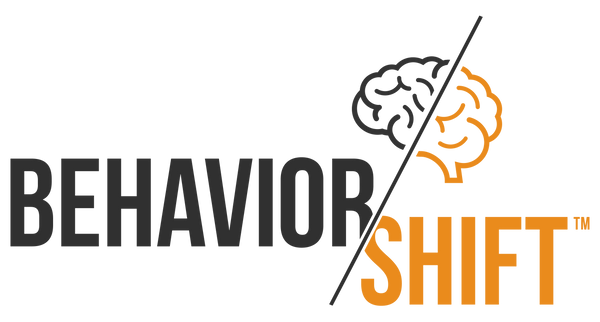In 2008, Dr. Gary Latham – a pioneer of goal-setting theory – stared at the results of his newest study in disbelief. They couldn’t be right. They went against everything he believed in; everything his career had been built on.
For decades, Latham believed goals were solely shaped by deliberate, conscious intention. But now, a simple experiment suggested there was more to that story; subtle, unconscious cues could also steer people’s actions without them realizing it.
It had to be nonsense, and he was determined to prove it.
At the time, this idea known as “priming” was gaining popularity in social psychology. Priming suggests that subtle cues in your environment (a word, a photo, an object) can activate a goal in your mind and change your behavior without you realizing it. To a lifelong goal-setting researcher, it sounded like “scientific blarney.”
So, when his doctoral student, Amanda Shantz, needed a dissertation topic, he gave her a challenge he believed would solidify his skepticism. But it didn’t give him the victory lap he expected.
They set up an experiment. Participants waited in a lab for a professor who was “running late”. Half sat near magazines about health and exercise; half sat near magazines about nature. Twenty minutes later, when offered an apple or a chocolate, the control group unanimously chose chocolate while the group exposed to health magazines overwhelmingly chose the apple.
None remembered the magazines, yet it seems to have influenced their decision. How was this possible? Latham doubled down – this could not be right.
He moved his experiment to a more uniform environment — a fund raising call center, where every employee reads the same script. They added a picture of a runner breaking a finish line behind the words on the standard paper script. While employees said they didn’t notice it, from the first hour their fundraising numbers surged and stayed high all week. He repeated the study again and tried some different formats to similar findings.
Still unconvinced, he experimented with a company’s weekly motivational email, adding twelve achievement-related words like strive, win, and compete. Within five days, employees who received the primed emails had significantly higher productivity.
No matter what he tried, Latham found himself proving what he had set out to disprove.
“This bothered me deeply,” he later admitted. “I’m supposed to be an objective behavioral scientist — and here I am proving, over and over, that we’re all being influenced by things we don’t even see.”
By the end, the skeptic had become a believer — and even a contributor to a field he once dismissed. Goal priming wasn’t blarney. It was real, and it was powerful.*
These studies exemplify the power of small influences on our behavior. The small cues we barely notice, the environments we move through; these quietly shape the decisions we think we’re choosing freely.
Goal priming is just one example of the countless forces shaping your behavior every day. When you start to understand these factors — the heuristics that drive your decisions, the cues that steer your habits, and the behavioral biases that impact your perceptions and motivations — you can flip them in your favor. You can make intentional shifts that help you build better habits, make smarter decisions, and design environments that pull you toward the life you want.
This is what Behavior/Shift™ is built on — and that’s what we promise to deliver: simple, science-backed insights that help you use your brain’s built-in wiring to create meaningful, lasting change. Thank you for being here.
*It’s worth noting that priming research has faced replication challenges; especially with some of the early, high-profile studies. But these challenges don’t undermine the broader concept. Instead, they highlight something fundamental about human behavior: context matters. Well-designed, carefully controlled studies continue to show reliable priming effects, reminding us that subtle cues can shape our actions – just not in a one-size-fits-all way.
Meet Behavior/Shift™ — and the Brains Behind It
We started Behavior/Shift™ with a simple but ambitious idea: what if everyone — not just academics and corporations — could use behavioral science to live better?
Every day, we make hundreds of decisions about what to focus on, how to spend our time, and what really matters. Yet many of those decisions aren’t guided by deliberate thought. They’re shaped by invisible forces: habits, biases, emotions, and the environments around us. Understanding those forces changes everything.
That’s what drives us.
Behavior/Shift™ began as a collaboration between behavioral science, design, and storytelling. Our team fuses these disciplines with one shared mission: make behavior change feel human, practical, and doable.
-
Kurt Nelson, PhD brings decades of behavioral science expertise, uncovering why people do what they do and how to help them do it better.
-
Ben Granlund translates those insights into clear, compelling concepts, using visual storytelling to make complex psychology intuitive.
-
Alex Belanger brings it all to life with her years of design and product expertise — turning complex ideas into tools people can actually use.
Behavioral science shows that knowledge alone doesn’t change behavior. That’s why at Behavior/Shift™, we focus on designing moments of possibility: small shifts that help you see progress, feel control, and believe that change is within reach. Because once you believe, your brain follows through — dopamine surges, motivation rises, and you move closer to the life you want to live.
We exist to make change approachable. Through journals that help you reflect and grow, workshops that shift how leaders lead, and stories that remind us what it means to live intentionally in a distracted world, Behavior/Shift™ helps people everywhere bridge the gap between wanting change and actually living it.
Welcome to Behavior/Shift. Let’s rewire what’s possible.

